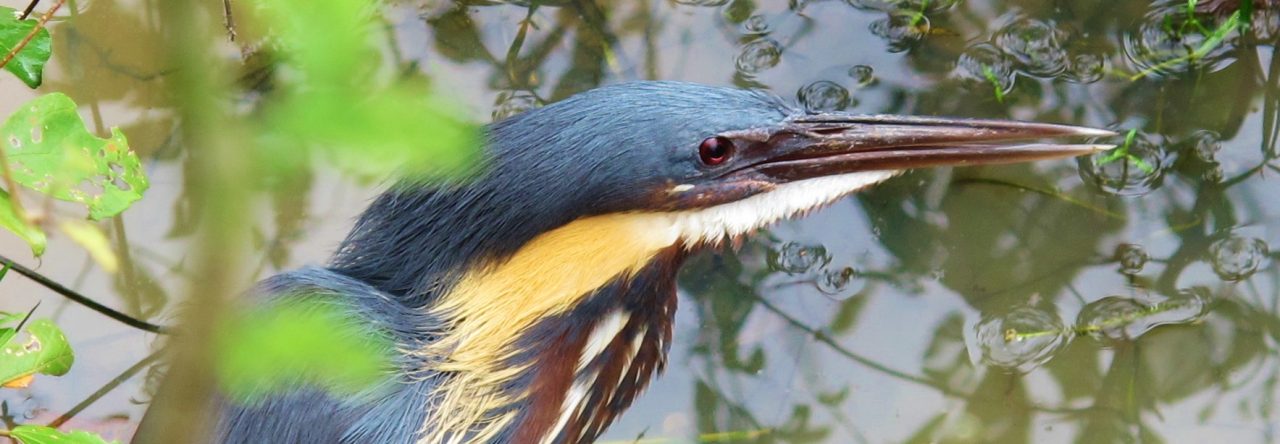Menacing-looking dark clouds at dawn promised a reprieve from the relentless heat today – and maybe even some rain and grounded migrants- but it took just the duration of a 7-11 breakfast stop for the clouds to melt completely away, leaving the usual August agenda of strong sunshine and hazy skies. My first stop on the outskirts of Sangu came up trumps with an adult Little Stint showing well among legions of Red-necked Stints. This scarce migrant is being regularly reported in coastal Taiwan at the moment, and you get the feeling that this species is almost guaranteed among the thousands of stints at this time of year, providing you have the patience to look!
Steve M was already in position at the lighthouse when I arrived at 8.30am, and together we enjoyed a fruitful seawatch for the rest of the morning. Common Terns were sporadically moving south, with just over 300 recorded during the morning – apparently a very low count for the time of year. Of much greater personal interest was a long hoped-for target lifer, Aleutian Tern. Two of these fine birds flew south, and I managed to get onto one of them quickly enough for just-about-tickable views. Without Steve’s expert eye, I doubt I would have been confident enough to pick it out myself. This is a regular migrant past Qigu in May and August, although vastly outnumbered by Common Terns later in the month, and unlike the latter species is more strictly pelagic and doesn’t pause at the sandbar.
Much better views were enjoyed of the Brown Noddy that passed close inshore, which was doubly satisfying because I was the first one to spot it! It’s been a long time since I saw two lifers in one morning. Another good record was a party of three Brown Booby flying south. Although frequent enough in the east, this is a rare species in the shallow waters off south-west Taiwan.
Next, we checked out the remains of the coastal forest, which due to continual encroachment by the sea is now only half the size it was when I last visited it in late 2014 – and a mere fraction of the lush and extensive forest that stood at this spot a decade ago. Migrants today were represented by a lone Arctic Warbler and a handful of Brown Shrikes. The degradation of the habitat means we probably can’t expect too many birds here this autumn, although I will continue to check it anyway.
The tide was out, so it seemed like an opportune time for the now-familiar trudge out to the sandbar. This proved to be a worthwhile excursion, with three Gull-billed Terns hawking over the saltmarsh, and a Chinese Egret dancing around on the tidal mudflats. One of the Gull-billed Terns was still in full breeding plumage, and later on the sandbar I saw another three of this species, all of which were in non-breeding plumage, so at least 4 and possibly as many as 6 individuals were involved. The sandbar itself held large numbers of Common, Little, and Great Crested Terns, with a couple of Roseate Terns and a Black-naped Tern among them – but again no sign of that holy grail of terns, the Chinese Crested.
A brief but efficient stop at Tucheng on the way back produced an Asian Dowitcher, my first in Taiwan this autumn, and three Temminck’s Stints. All of these birds have been reported on and off here for at least a week. The presence of three Avocets, seemingly the same birds I saw here a week ago, reinforced the impression that lots of stuff is just hanging around at the moment. Let’s hope for some decent weather to get things moving again.
Lifers: Aleutian Tern, Brown Noddy (total 2,131).
2016 World Tear Tick: Brown Booby (total 798).



